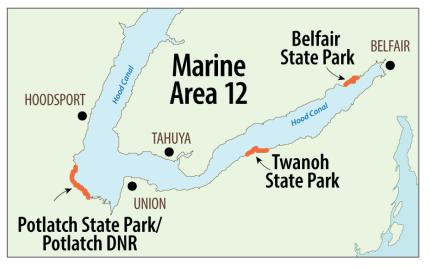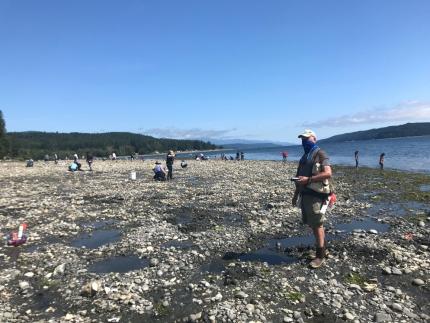ARCHIVED NEWS RELEASE
This document is provided for archival purposes only. Archived documents
do not reflect current WDFW regulations or policy and may contain factual
inaccuracies.
News release Aug. 28, 2020
Contacts: Kat Meyer, 360-302-3030 x323; Chris Eardley 360-302-3030 ext. 302; WDFW shellfish hotline at 1-866-880-5431
OLYMPIA – Washington Department of Fish and Wildlife (WDFW) shellfish managers have seen record-setting participation in recreational clam and oyster harvest in Puget Sound this year. Higher participation has resulted in three Hood Canal beaches, which previously closed for clam and mussel harvest, now closing for oyster harvest earlier than expected. This closure is needed to ensure clam and oyster gathering opportunities in future seasons.

Starting on Tuesday, Sept. 1, oyster seasons will close at Hood Canal’s Belfair State Park, the Potlatch beaches and Twanoh State Park. The Department previously closed clam and mussel seasons on these same beaches to maintain future gathering opportunities after the state reached its share of harvest. Oyster seasons will now also be closed.
“Unfortunately, one of the things we’ve seen is that people aren’t recognizing that clam and mussel seasons may vary from oyster seasons on some beaches,” said Camille Speck, Puget Sound Intertidal Bivalve Manager for WDFW. “As a result, we must now close oysters on these beaches in order to prevent continued illegal clam harvest that will impact future years’ clam seasons and populations.
”Despite previous clam closures at several sites, managers are reporting consistently high numbers of people showing up to harvest clams, “even though these beaches have signs indicating the closures,” said Speck.
“We want to encourage people to spread out and try some of the less-visited beaches,” said Speck. “The Washington Shellfish Safety Map is designed to help clam, mussel and oyster enthusiasts locate open—and lesser-known—beaches, close to home.”

Harvesters can also find up-to-date information on seasons and shellfish safety information on the Washington Shellfish Safety Map webpage.
“Biotoxin closures are in effect in some areas and conditions can change quickly, so checking this website the same day you plan to harvest is a crucial step,” said Speck.
Clam and oyster season and beach information is additionally available at WDFW clam, mussel, and oyster beach webpage. Harvesters can call the WDFW shellfish hotline at 1-866-880-5431 as well.
WDFW will continue to monitor shellfish harvest levels across Puget Sound, and staff expect to make additional beach and season closures this season as necessary.
WDFW reminds harvesters to fill their clam holes after digging, leave oyster shells on the beach, and abide by size and daily limits to help maintain a sustainable resource and avoid getting a ticket. WDFW is also asking oyster and clam harvesters to give other beach visitors and access site staff space and abide by responsible recreation guidelines when visiting. If a park or access site is busy or at capacity, have a backup plan to visit another site.
The Washington Department of Fish and Wildlife is the state agency tasked with preserving, protecting, and perpetuating fish, wildlife, and ecosystems, while providing sustainable fishing, hunting, and other recreation opportunities.